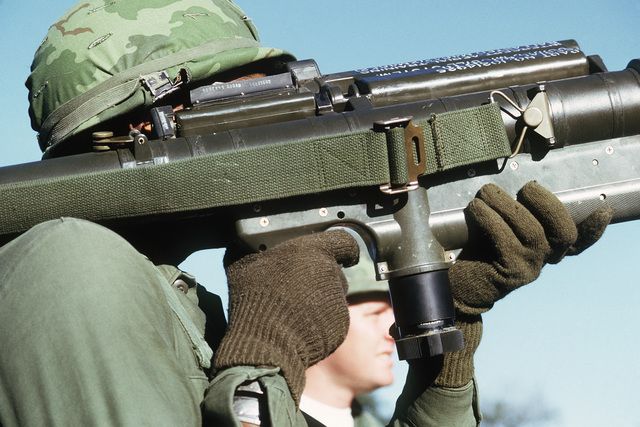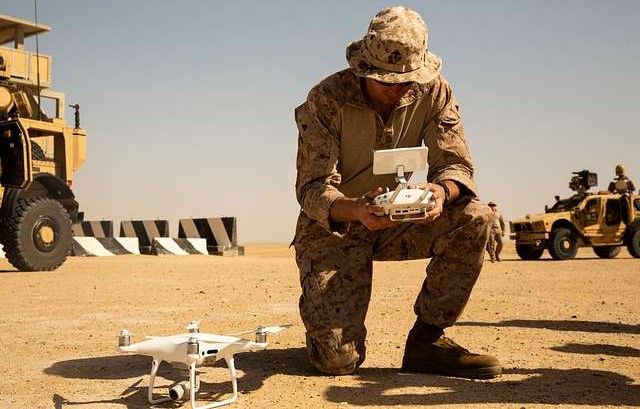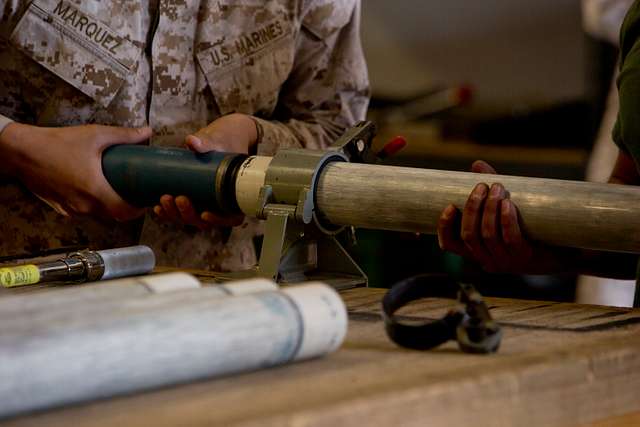US Moves to Arm Troops with Counter-Drone Weapons
Learning from the frontline drone wars in Ukraine, the US is now looking at how to arm foot soldiers with anti-drone defence systems.

The importance of counter-drone technology has never been more evident than in the ongoing conflict between Ukraine and Russia. With drones now an indispensable tool for both sides in the war (used for reconnaissance, targeting, and even assault missions) whoever controls the skies with their drones holds a significant battlefield advantage.
This means that alongside the increasingly prevalent use of drones (or uncrewed aerial vehicles - UAVs), has come the critical need for effective countermeasures.
From radio frequency jammers that disrupt drone control signals to directed-energy weapons that can disable or destroy UAVs, the array of counter-drone technologies available has become a vital component of modern military strategy.

Know this, the US Army has recently announced that it is buying portable electronic warfare attack and scanner systems to be deployed to soldiers to help defend them against enemy drones. This plan includes $100 million for hardware, as well as extensive training, which will be spent on a system called the Brigade Combat Team Manpack (aka the Terrestrial Layer System) designed by Mastodon Design, a subsidiary of defence contractor CACI.
A move which an army spokesperson described as “on track to be the first dismounted electromagnetic attack/electromagnetic support program of record for the Army.”
“The system will be fielded to units this year … and will eventually go to electronic warfare units across every Army brigade combat team,” explains a report by the industry journal Defense One. “The Manpack is designed to scan the electromagnetic spectrum for indications of enemy activity, like command post emissions, as well as to jam enemy transmissions. It requires two people to operate.”
To underline the importance of this tactical and hardware adjustment, the US Marine Corp is also beginning to arm its forces with counter-drone capabilities.
As another report by the industry journal Defense One states, “The Marines plan to equip every squad—from logistics units to reconnaissance teams deep in enemy territory—with a suite of tools to protect them from drones … such as the Corps’ L-MADIS and MADIS systems.”
Something which Marine Corp Captain Taylor Barefoot, the Counter Unmanned Aerial Systems Capabilities Integration officer, described as a, “rudimentary, essential, self-defense capability.”
This has led procurement departments with the task of finding squad-portable equipment that can detect drones within a half-mile as well as weapons capable of taking down a drone weighing as much as 25kg.

One option being considered is to purchase low-end anti-air missiles such as the Advanced Precision Kill Weapon System, however while they are much cheaper than many missile systems, each unit would still cost as much as $30,000 - a price tag far greater than many anti-personnel drones.
“The Corps is also interested in establishing a multi-layered sensor network designed to identify drones before they get too close,” says Sam Stove, a military analyst. “Sensors that listen for radio communications might help, but you can’t ID the frequency-hopping drones used in Ukraine against a library of signatures. Visible-light sensors might be more useful, at least in some cases.”
Capt. Barefoot agrees, observing that, “If you have an optic that can look at the thing and identify it, it gives you just an added layer of certainty.”
On the other hand, some analysts argue that acoustic sensors would work better in the dark or in poor visibility, such as fog or rain.

One of the largest guides to how US troops will react to the latest drone threats has been observing troops in Ukraine and how they respond to enemy drones.
While it may be the simplest move to arm ground forces with shotguns and expect them to shoot down incoming drones, the instinctive reaction from foot soldiers on seeing an enemy drone is to lie down and take cover.
Speed is also another significant factor, as an incoming drone flying at 100 km/h gives a soldier a tiny reaction time to identify the drone, decide if it is friendly or not, deploy a weapon, and then fire.
Given all these issues, the ultimate answer to protecting ground troops from drone attack may be found in AI. A computerised command that can react almost instantly in identifying, aiming, and then launching protective fire.
“I want to be able to take a block of [electronic emission] tracks off of a sensor screen, and—just like you would select multiple icons on your desktop—just drag and drop across [the drones], and then tell the computer to kill everything in this box,” says Barefoot. “The interface is there, all of the components to make that happen are there, I just need the AI to come in and drive the bus.”
Sounds simple, but as with many AI-based military systems, the question remains as to which side will achieve this advantage first.
“There is a constant arms race,” explains one Ukrainian sergeant who commands a drone platoon on the eastern front. “We are improving our technology to counter these new realities on the battlefield, and in a while, the Russians will again have to invent something new to be able to defend themselves against our attacks.”
Seems as if the drone wars have only just begun.
Photo credit: Picryl, Jenikirbyhistory, Nara, & Picryl

